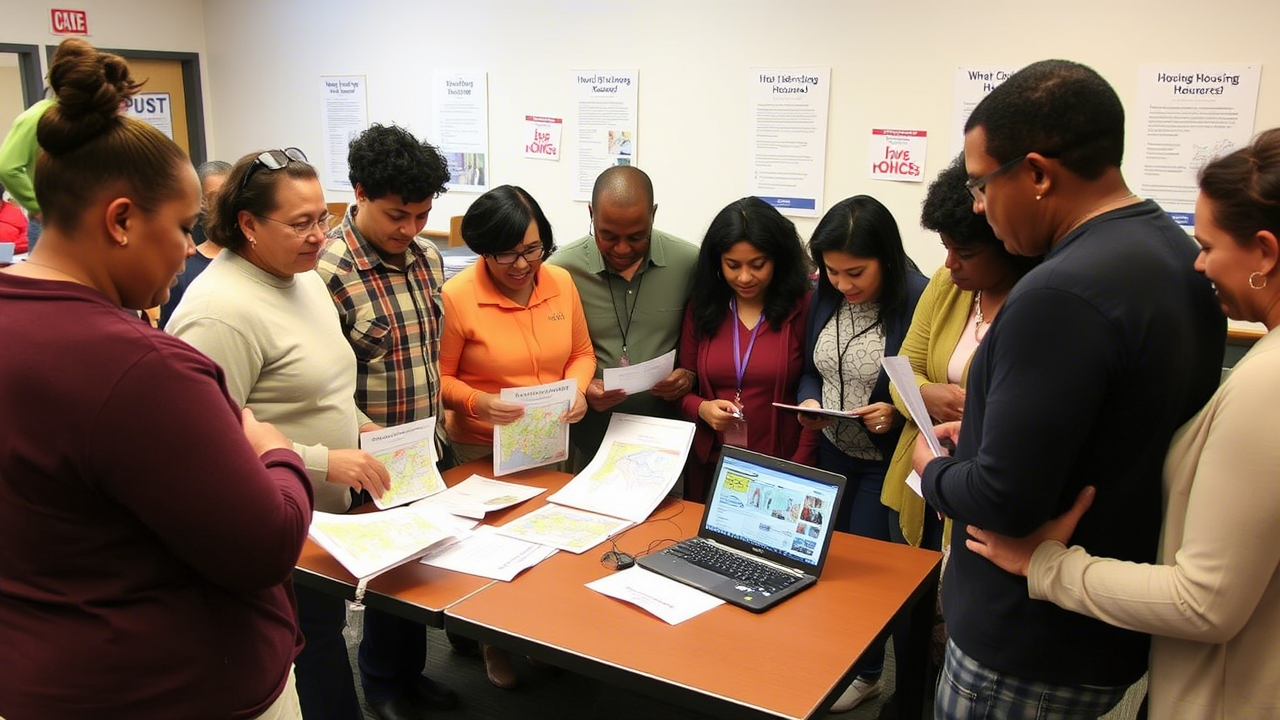Looking for a place that you can actually afford? You’re not the only one. The affordable housing crisis affects families anywhere. This article will be your guide to understanding where to find affordable housing. We will tackle everything from understanding eligibility to maximizing one’s chances of approval. Let’s dive in together as we explore the options available to you.
Understanding Affordable Housing
What is “affordable housing,” anyway? What kinds of programs are available? Plus, how do you know if you even qualify? Let’s break it down.
About Affordable Housing

Low rent is understood to be housing that doesn’t cost too much of your income, usually capped at 30% of your gross income. This includes rent and utilities, leaving enough money for folks to have enough left for food, healthcare, and other stuff. Critical community wellbeing.
Affordable Housing Types
Most programs are Section 8, or the Housing Choice Voucher Program, which allows low-income families to manage their rent expense payments of privately-owned houses. Also, public housing that is owned and managed by the government subsidizes apartments. Low-Income Housing Tax Credit (LIHTC) established to provide development incentives to developers for affordable rent units. Each program has unique rules and requirements.
Who qualifies under Affordable Housing?

Eligibility generally depends on your income. It also matters how big is your family. Each program has its own income limits, which are usually based on the area’s median income. For example, the income limit for single persons is usually different from that for families of four. You might also be required to meet the citizenship or immigration criterion.
Walkthrough the Application Process
It can be extremely intimidating to apply for affordable housing, but it’s all manageable when you take it inch by inch. Where do you even start searching for listings? How do you go about preparing a solid application? Well, what about those really long waitlists, anyway?
Where you can find affordable housing listings
First, start with government sites. HUD.gov contains info and links to local resources. Your local housing authority is also a key resource. Non-profit organizations often maintain listings of affordable properties. Don’t overlook websites that specialize in affordable rentals either. Cast a wide net.
Preparing Your Application
Gather all required documents before application time. This usually includes purse proof of income, IDs, and bank statements. Fill out application completely and as truthfully as possible. Missing details or providing incorrect details are common mistakes. A complete and accurate application shows you’re serious.
Understanding Waitlists and Prioritization
Wait. Affordable housing is much in need, so waitlists can sometimes be long. Depending on different factors such as quite possibly being a veteran, having some disabilities, or being homeless, prioritization can affect your placement. This way, you can have an understanding of how the waitlist works in your area in order to manage expectations better.
Maximizing Your Chances of Approval
Want to give your application an extra boost? There are simple steps you can take to improve your chances. It’s all about demonstrating you’d be a responsible tenant. Let’s look at ways you can stand out.
Improving Your Credit Score
A good credit score might be all that it takes to make a significant difference. Most landlords also have their credit history checked. Time your payment of bills very well; keep your credit card balances low. Even little improvements may help.
Verifying Financial Stability
Demonstrate that you will be able to pay rent regularly. Present evidence of quality continuous employment. Show any savings or properties. A record of thinking and acting responsibly toward one’s funds will make you a more appealing proposition.
Answering the Possible Red Flags
Everyone makes mistakes. If you’re evicted, or have criminal records or anything else on your record, be honest about it. Explain what happened and what you’ve learned. Accountability can go a long way.
Resources and Support for Affordable Housing Seekers
You’re not alone in this struggle. Many organizations and programs exist that help people. These include government entities and non-profits. Let’s explore the resources available to you.
Government Agencies and Programs
HUD, which is short for the U.S. Department of Housing and Urban Development, offers a variety of programs. At the local level, housing authorities administer Sections 8 and public housing. Many states also have affordable housing initiatives. Take a look at all levels of government support.
Non-Profit Organizations
These non-profits are the most crucial players in affordable housing. They provide housing counseling, legal advice, and applications. Some give temporary rental payment support. Search for local organizations that focus on housing in your area.
Rental Assistance Programs
Several rental assistance programs meet needs other than Section 8 housing. However, specific programs may cater to unique populations, such as veterans or the elderly. Emergency rental assistance programs offer help in a time of financial need. Do not hesitate to ask about all programs.
Different Affordable Housing Alternatives
Don’t think inside the box. Affordability does not equal renting an apartment. Co-living and micro-housing units are becoming ever more trendy. Homeownership might be possible, as well.
Shared Living and Co-Living
Co-living entails living with others, which significantly reduces individual costs. Usually, there are shared amenities such as kitchens and common areas. If you value community, then that might be even better when you consider price.
Micro-Housing Units
Micro-housing units are little homes, complete but too small to live in. Usually, they are below 400 square feet. Rent becomes cheaper due to lesser area. They are a nice option in urban hotspots where space is pricey.
Home Ownership Programs for Low-Income Buyers
Believe it or not, home ownership can sometimes be affordable. Many programs are written to help low-income first time buyers get into the home. Because of down payment assistance and low-interest loans, owning a home may be much more likely than you think.



